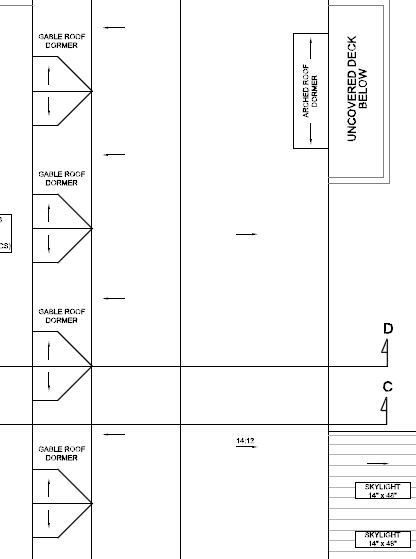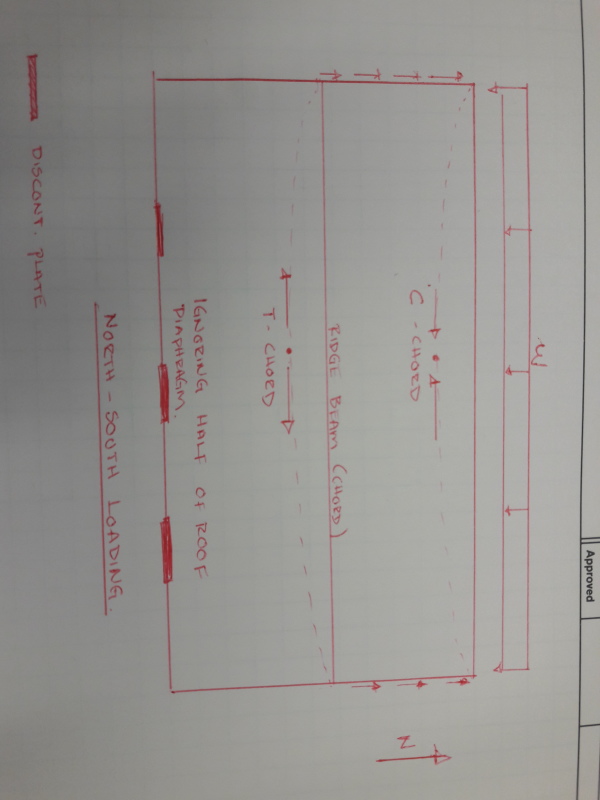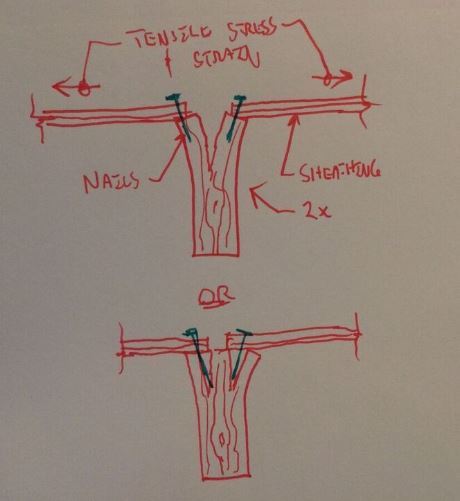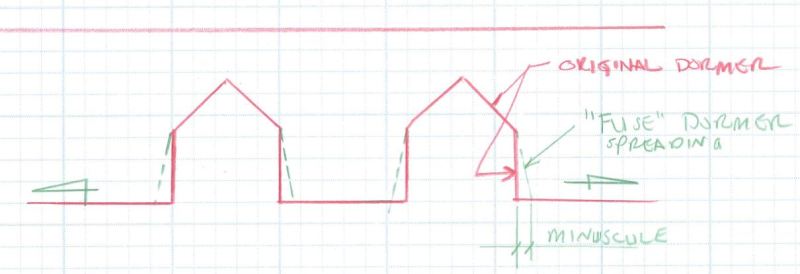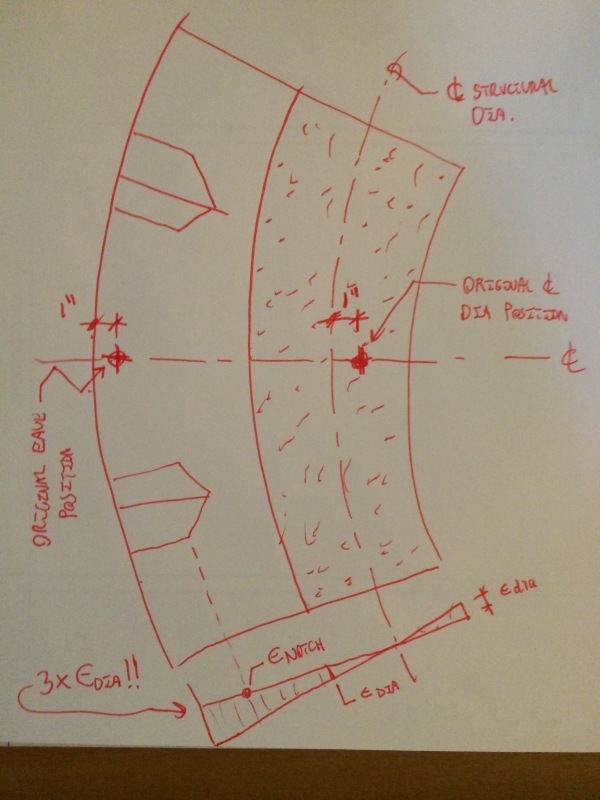JAE said:
Hmmm...not sure you are getting my drift
Nope, still kicking up dust. Please review the sketch below, in particular the details of the strain diagram at the bottom.
JAE said:
The 1" drift is at the outer edge of the building - depth of diaphragm doesn't matter.
As I see it, per the sketch below, eave strain will be 3X peak
structural diaphragm strain
precisely because of the width of the outstanding diaphragm.
JAE said:
You would design your diaphragm to limit the building drift...From that you back calculate the diaphragm deflection from the limit of drift at diaphragm midspan.
There's nothing to back calculate. Per the sketch below, the magnitude of the drift at the eave will be identical to the magnitude of the drift at the structural diaphragm center line. It's the strain that will differ.
JAE said:
So whatever depth of diaphragm you have - be it 12 feet or 12000 feet, the arc of the outer edge of the diaphragm is still just 1" or so and the strain in the diaphragm is still based on the difference in length of the straight diaphragm eave line and the arc length of the deflected diaphragm.
.
Again, I believe this to be your fundamental source of error. The arc formed by the 1" displacement is only part of the story. The far ends of the eave also spread further apart which add more axial strain. Vastly more. This is quite analogous to, say, reinforcing a wide flage beam with a WT on the bottom. The WT isn't just displaced downwards, it's
stretched. And that composite stretching is the source of our VQ/I stuff.
JAE said:
The sketch you show assumes that the strain is all concentrated at some brittle connection where in reality you have all sorts of fuses along the line....think about the additional deflection we add to our shear wall deflections due to nail slippage.
And what would these fuses be? All I see is some axially stiff sheathing panels and some nailed joints. Do you really think that you'll get meaningful nail plowing action through the plywood
prior to the tension perpendicular to grain failures that I illustrated above? I don't.
JAE said:
Also the dormers are giving up a huge amount of stiffness through the length so any possible build up of strain will be simply lost in the dormers.
The eave strain between dormers will be unaffected by the presence of the dormers. Eave strain at any location in the non-structural diaphragm will simply be a linear amplification of the strain in the structural diaphragm as I've shown below. And the structural diaphragm isn't notched.
JAE said:
A 3" lateral diaphragm deflection on a 100 ft. long diaphragm eave results in a net gain in arc length of 1/64" approximately. The strain from that is very small (1.3 x 10^-5). Waste of time to even bother with it.
I'd be happy to play along but we'd have to assign a width to this diaphragm in order to calculate meaningful results, for the reasons mentioned above.
Rationally, I feel that one
must acknowledge the presence of meaningful strain at the edges of diaphragms. For that strain is also the strain in our diaphragm chords. So if there's not meaningful strain in our diaphragm chords, how do our chord forces come about? 1/64" in 100 ft is a strain of 0.00015. That's not going to generate any chord force.
JAE said:
You would still have double top plates, continuous blocking or a collector of sorts along the edges between the dormers to help pull the thing together where it can - but the strain is nothing.
I acknowledged these practical realities myself in my previous post (11 Jan 17 19:28). Logically, however, I don't think that they should be included in the current, theoretical discussion. It seems patently inconsistent to follow this path:
1) Design a partial diaphragm to avoid the complexity of dealing with at notched full diaphragm.
2) Ignore the problematic aspects of the partial diaphragm because we actually have a notched full diaphragm.
I like to debate structural engineering theory -- a lot. If I challenge you on something, know that I'm doing so because I respect your opinion enough to either change it or adopt it.

